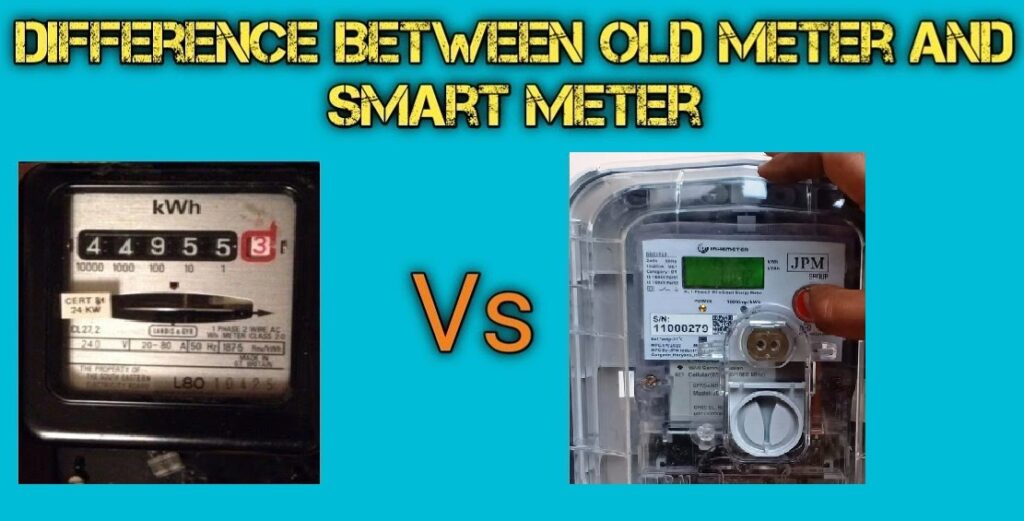Introduction
In recent years, the world has witnessed a growing concern for energy consumption and sustainability. Governments, organizations, and individuals are actively seeking ways to optimize energy usage and reduce their carbon footprint. In this pursuit, electricity departments across the globe are implementing cutting-edge technologies, with one notable advancement being the installation of smart energy meters. In this blog post, we will explore the current updates and significance of smart energy meters in revolutionizing energy monitoring.

Smart Energy Meters, also known as advanced metering infrastructure (AMI), differ from old traditional meters in several key aspects. Here are the main differences between the two:
- Communication: Traditional meters are typically electromechanical devices that only provide basic measurement capabilities. They do not have communication capabilities and require manual reading by a utility company representative. In contrast, smart energy meters are equipped with wireless communication capabilities, enabling two-way communication between consumers and utility providers. This allows for real-time data transmission and eliminates the need for manual readings.
- Real-time Data: Traditional meters provide cumulative energy usage readings, usually displayed on a mechanical dial. They require manual reading at periodic intervals, such as monthly, to determine energy consumption. Smart energy meters, on the other hand, provide real-time data about energy consumption. They can display current usage, historical data, and even offer insights into energy usage patterns, allowing consumers and utility companies to monitor and manage energy consumption more effectively.
- Billing Accuracy: Traditional meters often rely on estimated readings, where the utility company estimates the energy usage between manual readings. This estimation can sometimes result in inaccurate billing, leading to discrepancies between the actual energy consumption and the billed amount. Smart energy meters provide precise and accurate readings, eliminating the need for estimated bills. This ensures that consumers are billed accurately based on their actual energy usage.
- Advanced Features: Smart energy meters offer additional features and functionalities that traditional meters lack. These include:a. Time-of-Use (TOU) Pricing: Smart meters can support TOU pricing, where electricity rates vary based on the time of day. This allows consumers to adapt their energy usage to off-peak hours when electricity rates are lower, potentially saving them money.b. Remote Access and Control: Smart meters enable utility companies to remotely access and control the meters, eliminating the need for physical visits. This streamlines processes such as meter reading, connection or disconnection of services, and handling outages or maintenance.c. Integration with Smart Home Systems: Smart energy meters can integrate with smart home automation systems, allowing consumers to monitor and control their energy usage through mobile apps or smart devices. This integration promotes energy efficiency by providing real-time insights and enabling consumers to adjust their consumption accordingly.d. Demand Response: Smart meters facilitate demand response programs, where utility companies can remotely request consumers to reduce or shift their energy usage during peak demand periods. This helps balance the load on the electrical grid and prevent blackouts or strain on the system.
Overall, smart energy meters provide more accurate and real-time data, enable advanced features such as time-based pricing and demand response, and offer better control and monitoring options for both consumers and utility companies. They represent a significant advancement over traditional meters, empowering individuals and organizations to make informed decisions about energy consumption and contribute to a more efficient and sustainable energy ecosystem.
What are Smart Energy Meters?
Smart energy meters, also known as advanced metering infrastructure (AMI), are devices that digitally measure and record electricity consumption in real-time. Unlike traditional electromechanical meters, smart meters provide two-way communication between consumers and utility companies. These devices are equipped with wireless communication capabilities, allowing data to be transmitted back to the utility provider instantaneously.
Current Updates and Implementation
- Enhanced Energy Monitoring: Smart meters enable electricity departments to gather accurate and detailed information about energy consumption patterns. With real-time data, both consumers and utility companies can monitor energy usage more effectively, identify peak hours, and implement strategies for load management. This knowledge empowers consumers to make informed decisions about their energy consumption, leading to potential cost savings and improved energy efficiency.
- Time-of-Use (TOU) Pricing: One of the significant updates associated with smart energy meters is the implementation of time-based pricing. TOU pricing incentivizes consumers to shift their energy usage to off-peak hours when the demand is lower, resulting in reduced strain on the grid. Smart meters allow electricity departments to offer flexible pricing plans that encourage consumers to adapt their consumption habits and contribute to a more balanced energy distribution.
- Remote Access and Monitoring: Smart meters provide utility companies with the ability to remotely access and monitor energy consumption data. This eliminates the need for manual meter readings and simplifies the billing process. Additionally, real-time access to consumption patterns helps utility providers identify potential outages or irregularities promptly, allowing for faster response times and more efficient maintenance.
- Demand Response Programs: Smart meters facilitate the implementation of demand response programs, which aim to balance electricity demand during peak hours. By analyzing data from smart meters, utility companies can identify high-demand periods and incentivize consumers to reduce their usage voluntarily. This approach not only stabilizes the grid but also reduces the reliance on additional power generation, contributing to a more sustainable energy ecosystem.
Benefits and Future Implications
The installation of smart energy meters brings several benefits to both consumers and electricity departments:
- Accurate Billing: Smart meters eliminate estimated billing and provide precise readings, ensuring consumers only pay for the energy they have consumed.
- Energy Efficiency: Real-time data empowers consumers to track their energy usage, identify wasteful practices, and make informed decisions to optimize their consumption.
- Grid Optimization: With detailed consumption data, utility companies can identify areas of high demand, implement load management strategies, and improve the stability and efficiency of the electrical grid.
- Renewable Energy Integration: Smart meters can play a crucial role in integrating renewable energy sources into the grid. By providing real-time data, electricity departments can effectively manage the variability of renewable energy generation and balance it with consumer demand.
While smart meters offer several advantages, they also have some potential disadvantages. Here are a few disadvantages associated with smart meters:
- Privacy concerns: Smart meters collect detailed information about energy usage, including the time and duration of energy consumption. This data can reveal patterns of behavior and lifestyle, raising privacy concerns for some individuals. Unauthorized access or misuse of this information could lead to privacy breaches or invasions of personal space.
- Health concerns: Some individuals have expressed concerns about the potential health effects of smart meters due to their continuous emission of electromagnetic radiation. However, studies conducted so far have not provided conclusive evidence of harmful health effects within the established safety limits.
- Installation and maintenance costs: The deployment of smart meters requires significant infrastructure upgrades, including installation and maintenance costs. These costs are usually passed on to consumers, potentially leading to increased electricity bills.
- Potential for technical issues: Like any electronic device, smart meters can experience technical issues, such as inaccurate readings or connectivity problems. Inaccurate readings can lead to billing errors, which may require additional effort and time to rectify.
- Reliance on technology: Smart meters rely on digital technology and communication networks to transmit data. If there are issues with network connectivity or power outages, the functionality of smart meters may be affected, hindering accurate data collection and real-time monitoring.
- Lack of standardization: In some regions, there may be a lack of standardization in smart meter technologies and communication protocols. This can create challenges when integrating different types of smart meters into a cohesive system or when switching between utility providers.
- Resistance to change: Some individuals may resist the introduction of smart meters due to concerns about technological complexity, perceived loss of control, or changes in billing practices. This resistance can result in delays in the adoption and implementation of smart meter programs.
It is important to note that while these disadvantages exist, they may not be experienced universally or to the same degree in all situations. Many of these concerns can be addressed through proper planning, privacy regulations, public education, and ongoing monitoring and improvement of smart meter systems.
Looking ahead, the widespread installation of smart energy meters has the potential to transform the energy landscape further. As technology evolves, we can expect advancements such as interoperability with other smart devices, integration with smart home automation systems, and the utilization of artificial intelligence algorithms to optimize energy consumption further.
Conclusion
The installation of smart energy meters by electricity departments represents a significant step towards a more sustainable and efficient energy future. These devices provide real-time data, allowing consumers and utility companies to make informed decisions about energy consumption, promote load management strategies, and contribute to a more balanced and eco-friendly electrical grid. As smart meter technology continues to evolve, we can expect further improvements that will revolutionize the way we consume and manage energy. By embracing these advancements, we can work together towards a greener and more sustainable planet.

